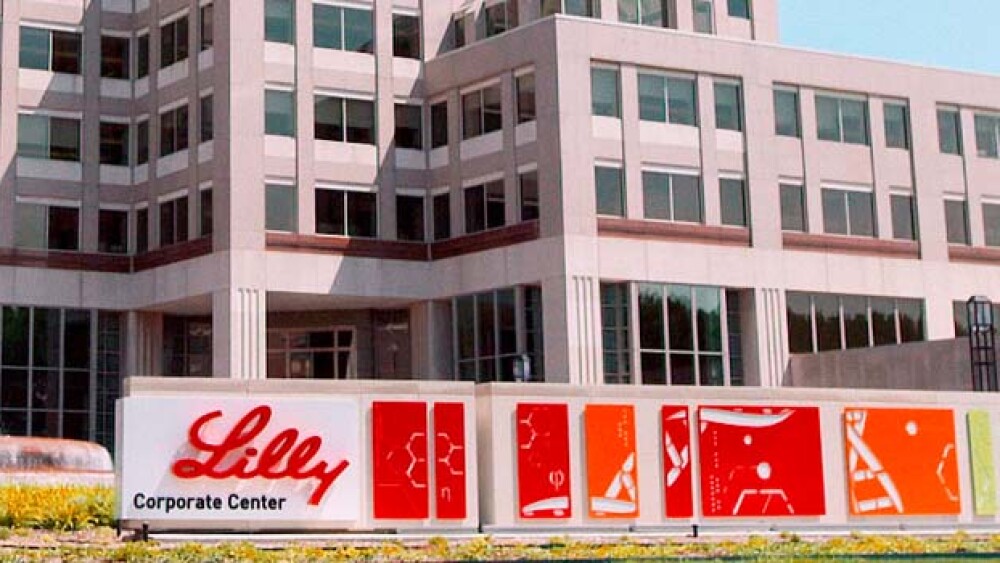Eli Lilly and Company published results from a new Phase IIIb clinical trial of Trulicity (dulaglutide) in combination with a sodium-glucose co-transporter-2 (SGLT-2) inhibitor, which has shown improved blood sugar control in adults with type 2 diabetes.
Eli Lilly and Company published results from a new Phase IIIb clinical trial of Trulicity (dulaglutide) in combination with a sodium-glucose co-transporter-2 (SGLT-2) inhibitor, which has shown improved blood sugar control in adults with type 2 diabetes.
The study’s primary endpoint of 24 weeks, the combination of Trulicity 1.5 mg and 0.75 mg in addition to ongoing treatment with an SGLT-2 inhibitor showed statistically superior glucemic control compared to the SGLT-2 inhibitor with placebo. In addition, more people in the Trulicity arms hit target A1C levels of less than 7 percent and less than or equal to 6.5 percent.
“I’ve seen in my practice that even with effective oral medicines like SGLT-2 inhibitors and metformin, many adults with type 2 diabetes may still need additional therapy to maintain their blood sugar levels,” said Bernhard Ludvik, associate professor of medicine, Rudolfstiftung Hospital Vienna and AWARD-10 lead author, in a statement. “The AWARD-10 results suggest that the combination of once-weekly Trulicity and an SGLT-2 inhibitor shows significant promise in helping more people with type 2 diabetes reach their treatment goals.”
The results of the trial were published in medical journal The Lancet Diabetes & Endocrinology.
Trulicity is Lilly’s once-weekly injectable prescription drug for type 2 diabetes. The AWARD-10 study was a double-blind, parallel-arm, placebo-controlled, 24-week trial to compare the safety and efficacy of two different doses of Trulicy in combination with SGLT-2 inhibitors compared to placebo plus SGLT-2 inhibitors in type 2 diabetes whose diabetes isn’t completely controlled with SGLT-2 inhibitors, with or without metformin. It evaluated 424 patients in eight countries.
Well-known brand SGLT-2 inhibitors include Johnson & Johnson Family of Companies’s Invokana (canagliflozin), AstraZeneca Pharmaceuticals LP’s Farxiga (dapagliflozin) and Eli Lilly’s Jardiance (empagliflozin).
Analysts have noted that Novo Nordisk’s Ozempic, a generic version of semaglutide, is scheduled to hit the market soon, but Lilly, in its fourth-quarter conference call, said it is “extremely well prepared for semaglutide’s launch,” according to Lilly’s diabetes head Enrique Conterno. “I feel good about the experience that we are providing patients. We believe that experience will be unmatched, so we do think that we will be able to compete very effectively.”
Trulicity has continued to grow in the marketplace, having hit about 40 percent market share recently. Today’s study may indeed give it a competitive edge, because Trulicity’s efficacy advantage over Ozempic is at risk. In head-to-head comparisons, Ozempic was a bit better than Trulicity at cutting blood sugar, and significantly better in helping patients lose weight.
Novo Nordisk is also working on an oral formulation of Ozempic, with Phase III clinical trial data expected later this year.
Lilly’s Jardiance is facing competition from Merck & Company’s Steglatro, an SGLT2 inhibitor. However, Conterno doesn’t seem overly concerned. At the fourth-quarter conference call he said, “We do like the fact that there’s going to be increased promotion by having some additional competitors enter the class.” He later said, “We believe that’s going to be an important catalyst for growth and it’s going to help the class, but also given Jardiance’s strong position, we will likely be the main beneficiary.”





